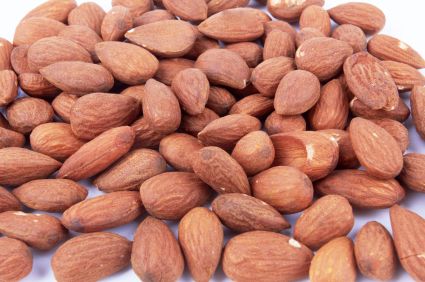WARNING!
The USDA cautions that our very lives are in jeopardy. And they are doing something about it!
They have decided they don’t want you to eat one of the healthiest snacks in the world.
This wholesome food has an array of health benefits. It is a rich source of calcium, folic acid, magnesium, protein, fiber, and antioxidants
But health “officials” are telling us we can’t consume this food in its raw (and healthiest) form because of salmonella outbreaks. Mind you, these outbreaks resulted in no deaths.1 Just 33 people fell ill. And that was during two episodes that happened in 2001 and 2004.
Two outbreaks are enough to change an entire industry?
100,000 people die each year from pharmaceutical drug side effects, according to the AMA.2 It’s one of the leading causes of death in the US. And yet the FDA turns a blind eye. But 33 people get sick from this nutritious treat and they pass a law.
So what is this evil threat to our health? This dangerous poison that could do us all in?
Raw almonds. Yes. You read that correctly.
In 2007,3 the USDA enforced that all almonds, even organic, must be cooked. To date, the FDA has approved oil roasting, dry roasting, blanching, steam processing, and propylene oxide (PPO) as proper cooking methods.
The pasteurization rule in particular raises some issues. The costs involved are forcing small, family-owned and organic growers out of business.4 But more important, it adds chemicals to a natural food. Hurting you… the consumer.
But wait. The label says raw.
Well here’s the thing…
The USDA doesn’t want you to know that you’re not buying raw almonds.
Cooking the almonds actually depletes its natural health benefits. And on top of that, PPO puts you at risk for cancer. According to the Centers for Disease Control and Prevention, it’s a known human carcinogen.5 Canada, Mexico, and the European Union have banned PPO because of its toxicity.
But still, the U.S. Environmental Protection Agency (EPA) claims that PPO poses no health risk. It states, “The cancer dietary risk estimates for propylene oxide are below EPA’s level of concern.”6 Maybe the risk is below their level of concern, but it should concern you. In addition they say that the use of PPO does not affect the nutritional characteristics.
Sound familiar?
It should. The EPA is mimicking the FDA’s behavior toward hundreds of pharmaceutical drugs and their health risks. Think of the statin drug controversy.
But what’s worse… You’re being lied to. Almond manufactures don’t have to label that they treated the nuts in any way.7
They’re just allowed to market almonds “raw.” And you have no way of knowing if the almonds have been pasteurized, steamed, or roasted.
So, what can you do to make sure you’re not ingesting any of the toxins?
The pasteurization rule only applies to almonds grown in the U.S. To get truly raw almonds you must buy them imported from other countries.
Genuinely raw almonds lower your cholesterol.8 Studies have shown they also increase vitamin E levels.
“Vitamin E is a powerful antioxidant that defends your cells against damage on a daily basis and prevents artery-clogging oxidation of cholesterol,” said Dr. Ella Haddad who conducted a study on almonds. “Eating a handful of almonds a day is a great way to get the vitamin E your body needs to stay healthy.”
A handful of raw almonds, that is…
Almonds are high in monounsaturated fat and omega 3 fatty acids that play a vital role in brain function and development.9 They also help reduce inflammation which lowers your risk for heart disease.
Raw almonds are nothing to be afraid of. They really are the perfect snack. The plethora of health benefits far outweighs the worries of another salmonella outbreak. Natural almonds help prevent diseases unlike the mandated pasteurized ones.
Like this Article? Forward this article here or Share on Facebook.
References:
1http://www.cdc.gov/mmwr/preview/mmwrhtml/mm5322a8.htm
2http://jama.jamanetwork.com/article.aspx?articleid=187436
3http://www.almondboard.com/Consumer/Documents/Pasteurization_Sheet%205.22.09.pdf
4http://www.drweil.com/drw/u/QAA400306/raw-deal-for-almonds
5http://www.cdc.gov/niosh/docs/89-111/
6http://www.almondboard.com/Handlers/Documents/PPO%20FAQ%20November%202007.pdf
7http://www.almondboard.com/Handlers/FoodQualitySafety/Pasteurization/Pages/Default.aspx
8http://www.ncbi.nlm.nih.gov/pubmed/15746835
9http://www.umm.edu/altmed/articles/omega-3-000316.htm

